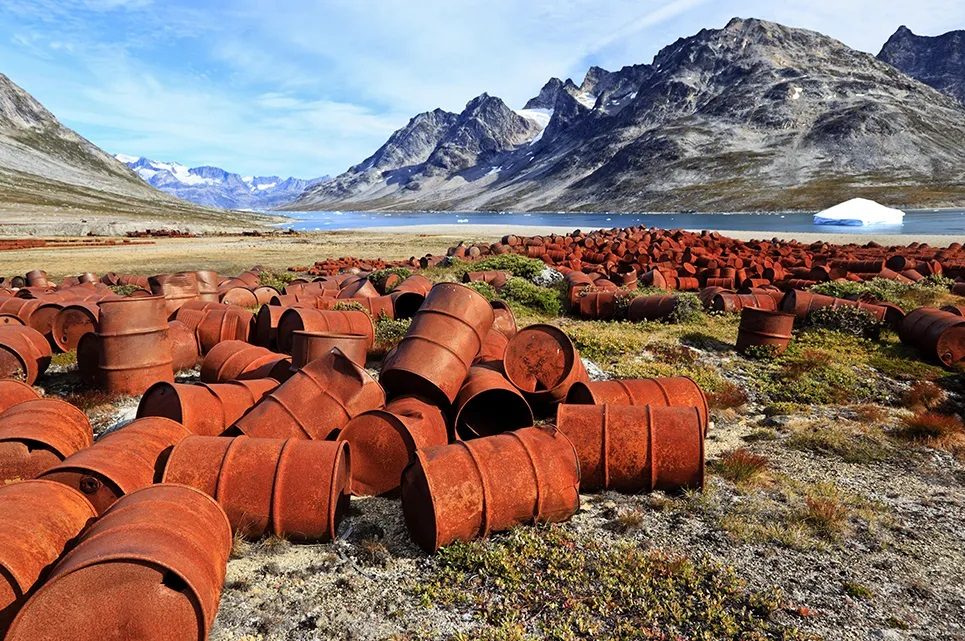In 1941, as it entered World War Two, the US Army barely bested Bulgaria’s for size and combat readiness. Nor did US forces have very much idea of what conditions were like in their new theaters of operation. In the winter of 1942, hot-weather gear and lightweight machinery landed in the deserts of North Africa where hot and dry conditions were assumed to persist throughout the year. Men froze half to death, even as their digging equipment foundered in winter mud. Sand, Snow and Stardust is the story of how the US military shed its ignorance and, by harnessing logistical intelligence and environmental knowledge, turned America into a global superpower.
Before World War Two the US operated just 14 overseas military bases. By 1960 its “leasehold empire” of more than 1,000 bases webbed the Earth and extended its influence over even the most extreme environments. In Greenland during the Cold War, bizarrely named bases proliferated across the landscape: SnoComp and Dogsled, Crystal Party and Snowman; Camp Fistclench, Camp Redrocks and Camp Century. It was an effort that was horribly wasteful and often wrong-headed; yet, in the final analysis, it was overwhelmingly successful, at least in turning a glacial valley in Greenland into a modern base that has been in operation since 1952. (In 2023 Camp Century was renamed Pituffik and given a new mission as a base for the Space Force.)
So here’s the paradox that exercises Gretchen Heefner, a historian at Northwestern University, Illinois: the effort to establish military bases in extreme environments – laying airstrips across deserts and snowfields, anchoring radar stations into permafrost and pure ice – did evident and lasting harm to those environments; but it also left us with much better knowledge of how Earth environments tick.
Heefner says she would dearly love to be able to write a minatory fable about how big science, riding the coat-tails of some globe-spanning military imperative, fell short; and how, by failing, it ultimately validated the environmental knowledge already available to indigenous peoples. Wouldn’t that make for a heartwarming tale – the triumph of the civilian, the little guy? But this is absolutely not what happens. Time and again throughout this clear-eyed narrative, local knowledge is ignored and boorish attitudes abound. At one point, perfectly sensible local advice about what to wear in the cold is considered “cranky” by scientists (at the post-war US Joint Research and Development Board). Instead, they spent laboratory dollars seeing if vests made of sponge rubber balls might somehow emulate the airflow properties of animal skins. What a way to do science: abstract, top-down, paternalistic! Yet it works – so that today, as Heefner observes, “studies of the ice, the ocean, animals and even black holes all maneuver on the backbone of US military power.”
The pursuit of strategic advantage is such an effective accelerator of scientific understanding, its inefficiencies and stupidities seem almost worthwhile – especially if you’re an academic whose only chance of doing fieldwork in extreme places is to hitch a ride on a military plane. Displaced locals, staring over the fence at their despoliated hunting grounds, may entertain a different perspective. But who listens to them?
For the last three quarters of a century, the US Army Corps of Engineers has been applying earthly lessons to extraterrestrial problems. Pity especially the plight of Bruce M. Hall, the first head of the Corps’ space sciences section. He was tasked in 1962 with stringing together an entire lunar construction program without even a single bucketful of moondust to pour, mold or otherwise play with or ponder over.
As we contemplate the exploration and settlement of places so far-flung that we need rockets to reach them, we end up revisiting all the naiveties and apparent errors of a bygone generation. “Analogue deserts” manufactured at Yuma Test Station in Arizona in the 1950s inspired maps that classified the Earth’s deserts according to how much like Yuma they were. How silly this project sounds. But our current efforts at modeling Mars are, of necessity, just as crude. Right now there are “Mars-like” sites standing in for the real thing in the Arctic, Antarctica, Utah, Hawaii and the Atacama desert. Our maps of Mars still tell us more about what we don’t know than about what we do.
Heefner’s history of how we acquired knowledge of the Earth’s extreme places is critical of the waste involved, and testifies to the human, political and ecological damage it inflicted on some of the most vulnerable people on the planet. On the other hand (and with what disquiet one can easily imagine), she leaves open the possibility that some knowledge will only ever be wrested from nature by ugly means. Recall, for example, the ice cores that first revealed to us the mechanics of climate change. These came from drilling experiments meant to test the feasibility of a US Army project called Iceworm, that would have shuttled nuclear munitions about by rail under the Greenland ice cap.
You don’t have to like it, but facts is facts: science follows technology; and technology follows the gun.


























Leave a Reply